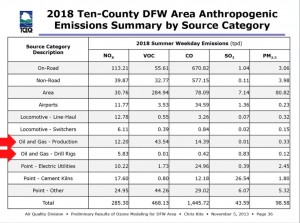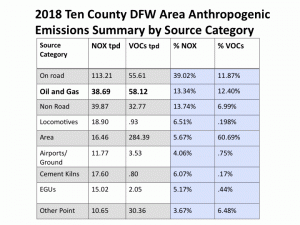Three Easy Pictures: Why the TCEQ Didn’t Want Compressor Locations Publicized
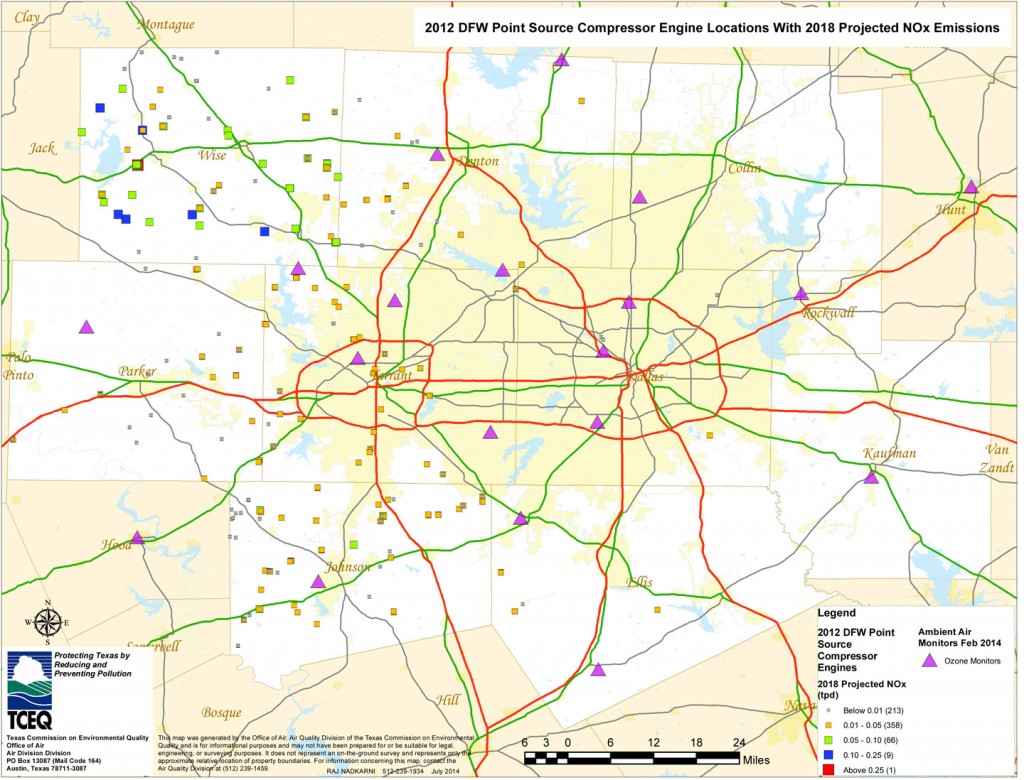
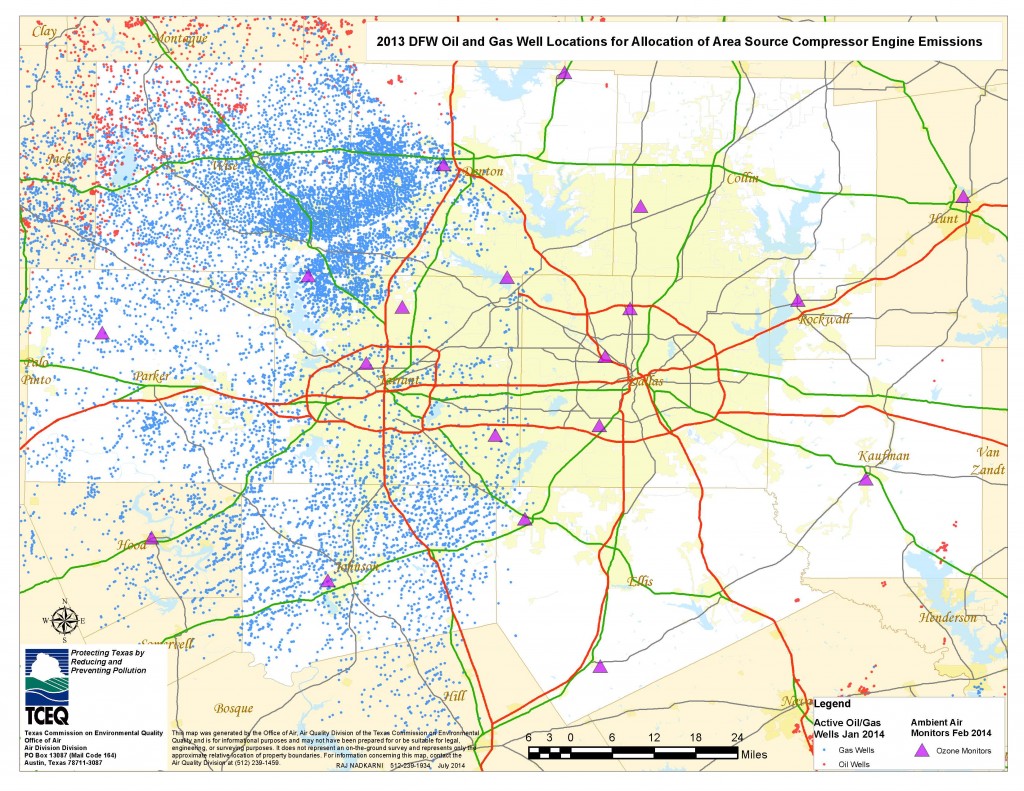
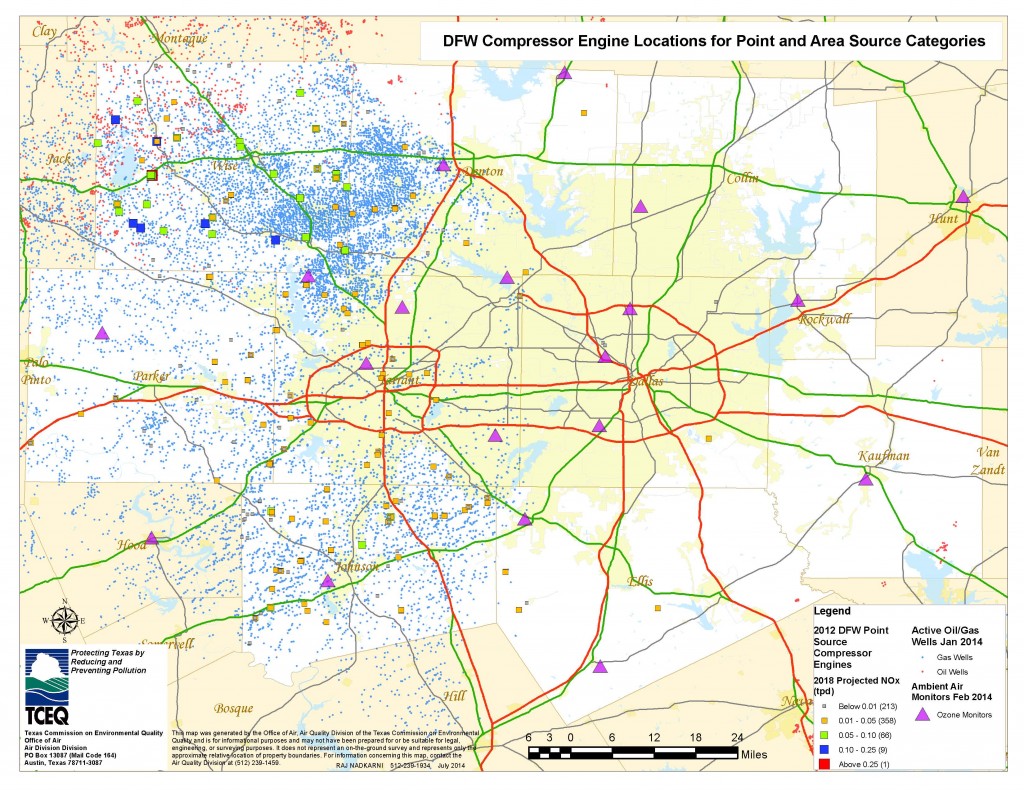 These are maps that supposedly weren't available…until they were.
These are maps that supposedly weren't available…until they were.
From January all the way through June, citizens involved in watch-dogging the state's drafting of an anti-smog plan for North Texas had been asking if the Texas Commission on Environmental Quality had maps of the locations of all the gas compressors in the 10-county DFW "non-attainment" area for ozone.
The answer from the state, over the course of at least three regional air quality meetings in Arlington, was always no.
Then State Representative Lon Burnam asked the same question, officially, in a letter to TCEQ. About two weeks ago, he got these three maps in the mail. Thanks to Representative Burnam for his follow-though.
This dodge followed an attempt by the state to hide the emissions from these compressors in other categories besides "Oil and Gas" in an attempt to minimize the industry's air pollution impacts on DFW air quality.
You can understand why TCEQ wasn't eager to show these maps.
The first shows the location of 647 large gas compressors. The volume of air pollution from each of these compressors is so large that they're considered "point sources" like power plants, cement plants, manufacturing plants, etc. According to the TCEQ, these larger compressors will be emitting over 14 tons of smog-forming Nitrogen Oxide pollution PER DAY by 2018.
The second shows the approximate location of the thousands of smaller, "area sources" compressors. TCEQ doesn't really know how many of these there actually are – they've never counted and no inventory by industry is required.
Instead, the state bases the number and approximate location of these smaller compressors on the production rates of gas in the Barnett Shale, as reported by the Railroad Commission, and disperses them accordingly.
There's some question about whether this is the most accurate way to take a count – a lot of industry literature says you should use the number of wells and the age of the wells instead of the production rate because as a gas field gets older, operators use more compressors to extract harder-to-get gas.
This is important because while production rates in the Barnett Shale have gone down, the number of wells is increasing.
The upshot is that as impressive as all those dots seem in the second map, they may actually represent an underestimate of the number of smaller compressors on the ground. As it is, TCEQ estimates these compressors will collectively release another six and a half tons of smog-forming Nitrogen Oxides PER DAY by 2018. That's in addition to the pollution of the larger point source compressors.
The last map is a combination of the first two. In all three the region's smog monitors are the purple triangles. Please take note of their location as well.
For over a decade now it's the monitors at the Denton Airport and in Northwest Tarrant County – at Meacham Field, in Keller, in Grapevine and Eagle Mountain Lake – that have recorded the highest smog readings in the entire regions.
There's no question as pollution accumulates over Dallas and Fort Worth and blows Northwest, ozone levels get higher. It's also true the pollution plumes from the Midlothian cement plants can blow directly into the paths of many of these monitors. But can anyone look at these maps and not realize that these gas compressors are also contributing to the high readings being recorded at the monitors in Denton and Northwest Tarrant County?
That's the real reason TCEQ didn't want the public to see these maps.
There's another regional air quality meeting next Tuesday, August 12th in Arlington from 10 am to 12 noon at the North Central Texas Council of Government offices at 616 Six Flags Road. These meetings are the only chance that citizens have to ask questions of TCEQ staff about the information going into drafting the new anti-smog plan. Without those kinds of questions, we still wouldn't know how much air pollution these gas compressors are emitting, or their location. Rep. Burnam would not know what official requests to submit. Information is power. Come get a little more empowered this next Tuesday.
DFW Still Dirty Air Capital of Texas
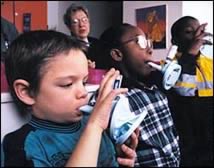 Here's the orignal version of Sunday's Star-Telegram op-ed piece responding to former Arlington Mayor and EPA Regional Administrator Richard Greene's assertion that DFW air quality "is getting better." You can see the published online version here. It's a pretty good sumary of the current 2014 situation…
Here's the orignal version of Sunday's Star-Telegram op-ed piece responding to former Arlington Mayor and EPA Regional Administrator Richard Greene's assertion that DFW air quality "is getting better." You can see the published online version here. It's a pretty good sumary of the current 2014 situation…
I don’t know who or what prompted my friend Mayor Greene to write what he did about DFW air quality last week, but the language he used sure looked like the same “don’t worry, be happy” arguments that officials at the Texas Commission on Environmental Quality promote these days.
Unfortunately for the Mayor, his column ran just after the worst week of DFW ozone readings in 2014 re-established the fact that North Texas has replaced Houston as the metropolitan area with the most abysmal air quality in Texas. A single five-day reminder of what real summer looks like was enough to produce four readings above the 1997 smog standard that DFW should have conquered years ago. In contrast, Houston hasn’t had a single reading of that severity so far this year. DFW also once again leads Houston in the total number of readings above the current smog standard.
Whenever state officials want to remind DFW residents how much air quality has improved, they, like Mayor Greene, start from a decade or two ago. That’s because if they started from 2008, or roughly the time Rick Perry decided to run for president, they couldn’t draw the same conclusion.
Since then air quality in DFW has stagnated. In fact, the 2011 TCEQ plan rhetorically aimed at clearing that old 1997 smog standard actually made ozone worse. It didn’t include any attempts to control major industrial sources of air pollution like the Midlothian cement plants, the East Texas coal plants, or the thousands of oil and gas sources that began operation in the Barnett Shale over the last eight years. It was the single worst failure of air quality planning in Texas history – so far.
But it may have a sequel because the Perry administration is once again drafting a lazy anti-smog plan that will not require any of those major sources to reduce pollution, instead relying on a new EPA-mandated gasoline formula to get the region “close enough” to the current standard (ironic isn’t it?). According to its own predictions however, “close enough” means the state is satisfied to leave at least four DFW monitors representing millions of residents in Tarrant County and Denton out of compliance.
It’s actually much worse than that. The smog standard the state claims it will be “close enough” to is one we already know is not protective of public health. A survey of peer-reviewed, journal-published studies over the last decade indicate widespread health effects, including heart attacks, strokes, and respiratory disease are occurring at levels of smog currently defined as “safe.” That’s why an independent panel of scientists recently recommended the EPA lower the national smog standard. The Agency must decide to accept or reject that recommendation by December, about the same time the state will be holding public hearings on its newest do-nothing plan.
So while TCEQ is submitting a plan that won’t even achieve the current smog standard in DFW, the evidence points to a need to do much, much better.
This summer’s kind weather may yet see annual smog averages drop. But if you believe this will be the norm in coming years, then you might also believe we’re on the verge of lasting peace in the Middle East or Justin Bieber is finally reaching maturity.
In its historic 2009 study, Cook Children’s Hospital found rates of childhood asthma in North Texas “far exceeded” state and national averages. Texas Department of State Health Services data show DFW has one of the highest hospitalization rates for childhood asthma in the state, with DFW accounting for a third of the $172 million spent admitting kids for treatment in 2011 alone.
We need a more serious approach to clean air than “close enough” to an already obsolete smog standard.
Jim Schermbeck is Director of Downwinders at Risk, a 20-year old DFW-based clean air group.
Power of the Press: Week after Trib Report on DFW Smog, First “Exceedences” of 1997 Standard
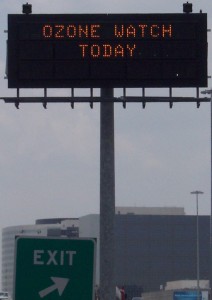 It was only eight days ago the that online Texas Tribune did the first real overview of DFW air quality for this "ozone season." Borrowing heavily from the June 16th Downwinders at Risk presentation to the North Texas regional air quality committee, it concluded that there had been no discernible progress in regional air quality for the past five to six years despite a new state anti-smog plan aimed at getting the area below the 1997 standard of 85 parts per billion.
It was only eight days ago the that online Texas Tribune did the first real overview of DFW air quality for this "ozone season." Borrowing heavily from the June 16th Downwinders at Risk presentation to the North Texas regional air quality committee, it concluded that there had been no discernible progress in regional air quality for the past five to six years despite a new state anti-smog plan aimed at getting the area below the 1997 standard of 85 parts per billion.
Ironically, up to that point, DFW had been enjoying one of the wettest, coolest, most ozone alert-free summers on record. Not one 100 degree day until July and only one "bad air" days of note on June 11th. It looked like we might actually be able to meet the 1997 standard of 85 ppb for the very first time.
That's all changed with this past weeks' return to familiar form. In just seven days, they've been at least four official "ozone alerts" issued for DFW by the Texas Commission on Environmental Quality. Those had produced four "exceedences" of the current 75 parts ppb standard, which the state is now aiming at with another "do nothing" plan under development and due out by the end of the year. On Wednesday the trend got more serious with the addition of the first two "exceedences" of the older 1997 standard we can't seem to conquer – a reading of 88 ppb at the NW Fort Worth monitor at Meacham Field and a 91 at the usually quiet Granbury monitor in Hood County. In the latter case, one mid-afternoon hourly reading reached as high as 113 – just 12ppb short of a violation of an even more ancient standard left over from the 1980's.
For comparison's sake, EPA scientists just sent a letter to EPA Administrator Gina McCarthy recommending that a new, lower federal standard for ozone be set at 60-70 ppb.
It will still take another week of 85 ppb plus days to produce the "fourth highest" readings at the Denton or Keller sites to combine with their 2013 averages and keep DFW in violation of a 17-year old ozone standard. But then again, we have all of August and September to go.
Not surprisingly, two of this summer's hot spots include traditionally troublesome monitors – the Denton and NW Fort Worth site. Tarrant and Denton Counties have historically been the places where the region's highest readings have originated. One reason is wind direction – smog accumulates from upwind sources like the Midlothian cement plants and blows Northwest during the summer. Another more recent reason is the mining of Barnett Shale gas deposits that release huge quantities of smog-forming pollution in the western half of the Metromess, a phenomenon that's been examined in a new UNT study that divided the region's ozone monitors into "Fracking" and "Non-Fracking" areas and found significantly higher readings among those in the Fracking area.
As we went to press with this post, Thursday's readings looked to be producing another round of 75 ppb or higher results. Adding to this year's ozone season irony is that over the last 20 years, July has traditionally been the summer month that produced the fewest number of high ozone readings, book-ended by higher numbers in June and August-September.
Depending on the weather, DFW may still be able to make it over the 1997 standard, 85 ppb hump. But based on this past week's results, that hump just got bigger. Stay tuned.
New Encyclopedia of Fracking Harms
 Those that keep up with these things know the rate of new information about fracking has increased almost exponentially for the past couple of years. New studies arrive monthly covering a host of subjects – air pollution, water contamination, earthquakes from injection wells, truck traffic, etc. So many it's hard to keep up and get a view above the fray. Now, at least for the next couple of months, there's a new comprehensive guide for journalists, citizens, and policymakers that tries to put all the latest evidence into one publication.
Those that keep up with these things know the rate of new information about fracking has increased almost exponentially for the past couple of years. New studies arrive monthly covering a host of subjects – air pollution, water contamination, earthquakes from injection wells, truck traffic, etc. So many it's hard to keep up and get a view above the fray. Now, at least for the next couple of months, there's a new comprehensive guide for journalists, citizens, and policymakers that tries to put all the latest evidence into one publication.
Produced by the Concerned Health Professionals of New York, the new document has the slightly unwieldy title of "Compendium of Scientific, Medical, and Media Findings Demonstrating Risks and Harms of Fracking." Clocking in at over 60 pages, it does manage to cover a lot of ground, including air and water pollution, occupational hazards, noise pollution, earthquakes, flooding, radioactive releases, climate change, agricultural threats, crime rates, property values, and the inflated economics of gas reserves. In short, for now, it appears to be the one-stop shop for everything you wish you didn't need to know about fracking, but wanted to ask.
Extensively researched and footnoted, the Compendium is something you can hand your city council member or State Representative in hopes that their superficial scanning at least produces a better appreciation for the myriad of hazards now associated with the practice.
Ask the State and Holcim To Finally Give DFW “the Holy Grail” of Cement Pollution Control Technology
 Swiss-based Holcim Cement is requesting a permit amendment to add new piece of pollution control equipment to its Midlothian cement plant, one of three cement plants that make the city the "Cement Capitol of Texas" and the largest concentration of cement manufacturing in the U.S. Good news, right? The problem is that the company is asking the state for the permit before deciding what kind of pollution control equipment to install.
Swiss-based Holcim Cement is requesting a permit amendment to add new piece of pollution control equipment to its Midlothian cement plant, one of three cement plants that make the city the "Cement Capitol of Texas" and the largest concentration of cement manufacturing in the U.S. Good news, right? The problem is that the company is asking the state for the permit before deciding what kind of pollution control equipment to install.
That's right. Holcim is asking the Texas Commission on Environmental Quality (TCEQ) to OK a permit that will result in a "major modification" of its Midlothian plant and could produce significant amounts of new pollution before it even decides what the major modification is going to be. Anywhere else in the country this might be a bit odd, but hey, it's Texas, where Rick Perry's TCEQ has a rubber stamp standing by for anything industry requests.
Holcim's permit request is being prompted by a problem complying with new federal regulations limiting a kind of pollution called Total Hydrocarbons, or THCs. These are also sometimes referred to as "Volatile Organic Compounds." Think Benzene, and other kinds of hazardous flammable gases. In its permit application Holcim says it needs to add new controls to reduce THC to levels and come under the new federal standard. Fair enough. The company then says that it's still trying to decide between two different types of controls and will make up its mind after getting the permit and seeing how well its choice works out on one of its two separate giant kilns. That's the bogus part.
But wait, there's more! The two technologies Holcim is considering installing in Midlothian are: 1) A Regenerative Thermal Oxidizer, or RTO, which is a fancy way of saying setting them on fire and flaring them off, and, 2) A Selective Catalytic Reduction unit, or SCR, which is a tower of treated metal honeycombs that pick up pollution as the plant exhaust passes through them. RTOs are already installed on American cement plants, including TXI's huge Midlothian kiln just a few miles down Highway 67 from Holcim. On the other hand, up to now full-scale commercial SCR units have only been installed on European cement plants and in fact, the Portland Cement Association has lobbied long and hard to keep them out of the US for fear of raising the pollution control bar too high for all of the country's cement plants.
That's because SCR is more expensive to build and maintain than most cement plant control devices. But for the money, you get the Holy Grail of cement plant pollution control technology.
Most of the European cement plants that have SCR units install them to remove another type of pollution from their stacks – Nitrogen Oxides (NOx). If that sounds familiar, it's because NOx is a major smog-forming pollutant, and DFW has so much of it that the region has never been in compliance with the Clean Air Act standard for smog. And you'll never guess which facilities are the single largest sources of NOx pollution in North Texas. Or maybe you will: the Midlothian cement plants. That's why Downwinders at Risk has made it a point to campaign to require all three Midlothian cement plants – Holcim, TXI and Ash Grove – to install SCR….since all the way back in 2001, when the first European units were deemed a success at a German cement plant. SCR can remove 80 to more than 90% of all NOx coming out of a cement kiln. The 6500 tons of NOx a year that the Midlothian cement plants are permitted to release could be reduced to 650 tons with the application of SCR.
Now, as it turns out, SCR units are great not only at capturing large amounts of NOx pollution, but all kinds of other industrial pollution coming out of cement plants as well. Like THCs – up to 70% or so, but also Particulate Matter, Metals, Greenhouse Gases, Carbon Monoxide, and Dioxins. It's what's called a multi-pollutant control device because it does such a good job of eliminating a wide variety of nasty stuff from smoke stacks. This is what makes it the state-of-the-art technology for communities hosting kilns. In contrast, RTOs are single-purpose pollution devices aimed just at hydrocarbon removal and aren't designed to remove other kinds of emissions.
So even though Holcim is considering operating SCR because of its hydrocarbon problem, it would have a massive impact on the plant's air pollution across the board. And if Holcim were to set the precedent, the clock would begin ticking on bringing SCR to the other two Midlothian cement plants as well. It would only be a matter of time.
The public comment period for telling the state whether to accept or reject Holcim's permit application ends this Friday, July 11th at 5 pm. (If you're interested in jumping through the hoops to fill out the online form for official comments, you can go here and use Permit Number 8996)
Downwinders is submitting detailed comments praising Holcim for considering SCR, but urging the TCEQ to reject this permit because it's too vague and doesn't commit the company to any partciular technology, including SCR. We've also been collecting letters form local officials and stare legislators that urge Holcim to definitively choose SCR.
Now we're asking you to help us bombard both the Texas Commission on Environmental Quality and Holcim's US headquarters in Dundee Michigan in the next 48 hours with the same message to show public support for the company to do the right thing while rejecting a placeholder permit that doesn't commit it to do that right thing.
We want a permit request from the company that says Holcim will definitely install SCR, becoming the first commercial application of this state-of-the-art technology in America.
Using our "Featured Citizen Action" link, you can send such a message to Austin and Michigan in a matter of seconds right now. All you have to do is click here and then send the e-mails. We guarantee there's no more important or easier thing you can do for clean air in North Texas this week than sending these e-mails to the TCEQ Commisisoners and Holcim Corporate leadership. Please help us get the cement plant pollution control technology DFW deserves. It will only take a matter of seconds for you to help us achieve a goal we've been working toward for 14 years. We can do this. But we need your help. Now. Thanks.
Mansfield Gas Well Awareness Group Opens Up New Front in DFW Urban Drilling Fight
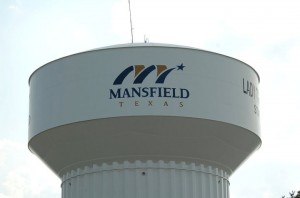 Ever since winning the Dallas Gas Wars in December of last year, Downwinders at Risk and our partners at the Texas Campaign for the Environment have been looking for a place and time to take the responsible drilling fight deeper into the Barnett Shale. We're glad to announce that we're teaming up with the newly formed Mansfield Gas Well Awareness group to do just that.
Ever since winning the Dallas Gas Wars in December of last year, Downwinders at Risk and our partners at the Texas Campaign for the Environment have been looking for a place and time to take the responsible drilling fight deeper into the Barnett Shale. We're glad to announce that we're teaming up with the newly formed Mansfield Gas Well Awareness group to do just that.
Mansfield is a relatively small Tarrant County town with a big gas industry presence. Sandwiched between Arlington and Fort Worth, it has a population of 59,000 spread over 36 square miles. it already has 200 wells on 51 gas pads with a total of 512 planned – or an average of 14 per square mile. Many of the most problematic wells are operated by Eagle Ridge – the same company whose antics single-handedly began the current "ban fracking" campaign in Denton. Like Denton, Eagle Ridge's Mansfield wells are close to homes, and have been known to spew surrounding neighborhoods with their own scrubbing bubbles concoction from flowback operations and incurred a rare violation notice from the state in February. The city also hosts a notorious Teas Energy Midstream compressor station that's a suspect in showering homes with an oily film from what was most likely from a messy blown down accident in May.
Those incidents got people's attention. Seeing themselves as the victims of a permissive "Fort Worth Model" of gas regulation, local residents are now moving to organize around a citizen-friendly "Dallas Model" with more protective setbacks, restrictions, and monitoring. As their new website and Facebook page notes, "Mansfield Gas Well Awareness is not a movement against natural gas or exploration of natural resources. Rather, we are against the permitting of toxic gas well activities near homes, schools, day cares, and parks. We are a movement of concerned residents that live in Mansfield who are for clean air, safe and healthy communities, and protecting peoples' rights to peacefully enjoy their property."
As is so often the case, pollution problems on the ground are connected to ethical problems at City Hall. Mansfield councilman Stephan Lindsey, who until recently was Mayor Pro-Tem is Senior Director of Government and Community Affairs for Quicksilver Resources, "a Fort Worth natural gas and oil exploration company" who never feels compelled to recuse himself from any votes concerning the municipality's regulation of the gas industry. Councilman and New Mayor Pro-Tem Larry Broseh is owner and President of Cam Tech, a company "dedicated to providing the drilling industry qulity pipe handling equipment," and also doesn't mind using his public office to vote on behalf of his industry interests. That means almost a third of the seven member Mansfield city council has professional gas industry ties.
As it happens, Mr. Lindsey is up for re-election next May. Old timers might recall that the Dallas drilling fight got real traction when gas friendly incumbent city council member Dave Neumann was upset by newcomer Scott Griggs way back in 2011. Although the new group hasn't officially targeted Lindsey, defeating him with a candidate more skeptical of industry claims would certainly send a strong message that Mansfield residents don't want the fox guarding their chicken coops.
The good news is that Mansfield Mayor David Cook took MGA members up on their invitation to see the Downwinders' presentation to the regional air quality meeting in Arlington on June 16th, where Director Jim Schermbeck devoted half of his time to explaining why gas compressors should be electrified. As far as we know, Cook was the only DFW are Mayor in attendance and it was a real coup for the young group to get him there.
MGWA's website already has some amazing pics and videos, as well as depressing factoids to share. If you know someone living in Mansfield, please let them know a new voice for citizens concern in on the scene and organizing to clean up the current messes as well as prevent new ones. Now that Downwinders has joined the fight, we'll certainly keep you posted on developments as well. Westward ho!
EPA Scientists Say Current Smog Standard Not Protective Of Public Heath Even While TCEQ Blows Off Current One
 It's been a pretty nice summer in DFW so far hasn't it? Wetter and cooler than usual. More wind. According to the stats, this past month was the first June without any 100 degree days in seven years or so. Consequently, it's also the first June in forever that hasn't seen any "Orange" or "Red" ozone alert days. If this keeps up, DFW may actually come into compliance with the 1997 ozone standard of 85 parts per billion (ppb) over an 8-hour time period – a first as well.
It's been a pretty nice summer in DFW so far hasn't it? Wetter and cooler than usual. More wind. According to the stats, this past month was the first June without any 100 degree days in seven years or so. Consequently, it's also the first June in forever that hasn't seen any "Orange" or "Red" ozone alert days. If this keeps up, DFW may actually come into compliance with the 1997 ozone standard of 85 parts per billion (ppb) over an 8-hour time period – a first as well.
But unless you think "global weirding" is going to produce these kinds of summers routinely from here on out, there's little cause for comfort. This year's cleaner air is a direct result of cooler weather. Substitute the hellish summer of 2011 for this mild one and you'd be seeing ozone alerts filling up your e-mail box. As a result, it's not out of the question we could meet the standard this year, but flunk it in 2015 if the weather reverts back to "normal."
In addition, while we may come in under the 1987 smog standard for the first time, the public health goal posts have moved with better science. In 2008, the Bush Administration lowered the acceptable level of smog to 75 ppb. That's the goal of the clean air plan that Downwinders and other groups are fighting the state over right now, saying it's not adequate to even get to that 75 ppb level.
Texas Commission on Environmental Quality staff say we don't need to implement any major pollution control measures on cement kilns, power plants, or natural gas facilities to reach this 75 ppb goal by the deadline in 2018. All we have to do is sit back and let a new federal gasoline standard hit the market in 2017 and we'll all be fine – well, except for those millions of residents who'll be breathing-in smog greater than 75 ppb on the north and western side of the Metromess. But the TCEQ staff say we'll be "close enough." No harm, no foul say the folks from the agency where smog is not considered bad for you.
But close enough should only count in horseshoes and hand grenades, not what people breathe into their lungs. And while some of us are trying to make sure the new TCEQ plan is serious about reaching an air quality goal that's now six years old, the level of ozone considered "safe" by experts is once again going down.
In a letter to EPA Administrator Gina McCarthy last week, the Agency's own Clean Air Scientific Advisory Committee (CASAC) recommended a new smog standard of between 60 and 70 ppb, saying that there's a boatload of evidence showing that the 75 ppb level is not protective of human health, and even at 70 ppb there's significant public health harm done by bad air.
"At 70 ppb, there is substantial scientific evidence of adverse effects….including decrease in lung function, increase in respiratory symptoms, and increase in airway inflammation. Although a level of 70 ppb is more protective of public health than the current standard, it may not meet the statutory requirement to protect public health with an adequate margin of safety….our policy advice is to set the level of the standard lower than 70 ppb within a range down to 60 ppb…"
This recommendation was not unexpected. Every five years, the CASAC is legally obligated to review the scientific literature to make sure the federal ozone standard is giving adequate protection to public health. The last time it did so in 2008, the panel came to a similar conclusion to lower it somewhere between 65 and 70 ppb, but the Bush Administration ignored its own scientists and chose the higher standard instead. An Obama EPA was supposed to correct that mistake when it came into office, but then-EPA head Lisa Jackson got mugged on her way to the White House by the President's re-election campaign. Any changes were put on hold until that five year review clock began ticking again. And now the official alarm has gone off on that clock. The result is a re-affirmation of the earlier findings, this time with even more science to back up the changes.
As a result, EPA will have to decide whether or not to adopt the tougher recommendations of its scientists by December 1st of this year. If they do, a new standard will be officially adopted by 2015 and we'll have to write a new clean air plan in a couple of years to achieve that goal by the end of the decade. If it doesn't, they'll be sued, with the CASAC letter as exhibit #1, and they'll lose and have to set a new standard anyway.
Why is that important to the current debate over TCEQ's plan to meet the 75 standard? Because the TCEQ plan leaves at least four monitors, spread out from Denton, to Keller, to Eagle Mountain Lake above 75 ppb – a standard that EPA scientists now say conclusively is not protecting public health.
"Close enough" to that 75 ppb level turns out to be too far away from real protection in light of the new recommendations for a standard below 70 ppb from the Science Advisory Committee. And that assumes you believe the computer modeling TCEQ has done to support its plan. To date, the state is 0 for 5 going back to 1991 in being able to accurately predict these things. If history is any indication, the state's plan will fail to reach its goal of 75 ppb at just about every one of the 20 monitors in DFW, not just four.
If you know your target of 75 ppb of smog over an 8-hour period is no longer a safe standard, and your current plan condones levels above that, it's not really a clean air plan.
December is not only when EPA must decide if it's going to pursue a lower smog standard. It's also when the state is scheduled to take public comment on its current DFW anti-smog plan. So you have the surreal possibility of holding public hearings over the merits of an already obsolete plan that isn't even serious about reaching its obsolete goal.
This is why DFW residents must demand a plan from Austin that aims lower, not higher. It's why they must demand the EPA not allow TCEQ to get away with being "close enough" to a standard that's not protecting their health. A real clean air plan would be shooting for an average of 65-70 ppb knowing that that standard will be coming down the road sooner or later. A real clean air plan wouldn't allow any monitor to exceed the current 75 standard. A real clean air plan would try to do its best to protect public health by implementing pollution control measures on the sources of smog that are the cheapest and most effective to target – Midlothian's cement plants, east and central Texas coal plants, and the natural gas industry.
And that's exactly what Downwinders and other members of the new DFW Clean Air Network are trying to do. We're pushing for stricter EPA enforcement of the 75 ppb standard, and we're pushing for adoption of "Reasonably Available Control Measures" on the cement plants and gas compressors – now, not later. Because the only way DFW breathers are going to get a better clean air plan out of Austin and Washington is by organizing for one themselves.
Study: Climate Change Will Likely Increase DFW Smog
 Just last week at the June regional air quality planning meeting the Texas Commission on Environmental Quality was bemoaning the fact that the weather too often determines how bad an "ozone season" DFW will have. And it's true. When we have really hot, dry, and windless summers, ozone levels soar as they did as recently as 2011-2012 when the recent drought seemed to reach its most awful heights in DFW. Conversely, when we have relatively cool, wet and windy summers, ozone levels abate, as they seem to be doing this year – at least so far.
Just last week at the June regional air quality planning meeting the Texas Commission on Environmental Quality was bemoaning the fact that the weather too often determines how bad an "ozone season" DFW will have. And it's true. When we have really hot, dry, and windless summers, ozone levels soar as they did as recently as 2011-2012 when the recent drought seemed to reach its most awful heights in DFW. Conversely, when we have relatively cool, wet and windy summers, ozone levels abate, as they seem to be doing this year – at least so far.
Of course, the TCEQ spokesperson was using weather as an excuse why DFW hadn't yet achieved compliance with the 1997 ozone standard after two tries that fell short. Completely overlooked was the fact that the last state air plan for DFW in 2011 promised historically low ozone levels by 2013 without any new pollution controls on major sources of pollution. Combine that lack of action with a really hot, dry summer like we saw in 2011, and you get the first clean air plan ever to leave ozone levels higher after it ended than when it started.
That's why it's important to think about the weather when you're trying to build new clean air plans for DFW that stretch years into the future. Air quality planners have to ask themselves if between now and the next federal clean air plan deadline of 2018, will there be more summers like this seemingly anomalous one, or will they more like the summer of 2011 when we had a constant barrage of 100 degree plus days as early as March?
Currently, the TCEQ is using a stretch of bad air days from 2006 to predict ozone levels between now and 2018 in their computer model for the DFW air plan to comply with the new, tougher 2008 ozone standard. But 2006 was pre-drought. Although they say they're "adjusting" the meteorology to compensate for weather changes since then, do you really trust TCEQ to assume worst-case weather scenarios when they're still trying to hide the smog impacts of gas pollution from the public? Us either.
So it's with more than a little self-interest that we note a new Stanford study with the too-sexy title of "Occurrence and Persistence of Future Atmospheric Stagnation Events" concluding that the Western US, including Texas, should expect hotter and therefore smoggier summers thanks to climate change. Why? Because hotter temperatures will slow the flow of air around the globe. That means less wind, and less wind means more time for smog-forming chemicals to sit and bake in the hot sun and form harmful levels of ozone. Historically, most of our worst ozone days are when winds are blowing less than 5 mph – stagnate air.
DFW isn't like Denver or LA where mountains form bowls around the urban areas and trap pollution in inversions. But the new study concludes the impact from global warming could have the same effect on the Texas prairie by stagnating air currents:
"Our analysis projects increases in stagnation occurrence that cover 55% of the current global population, with areas of increase affecting ten times more people than areas of decrease. By the late twenty-first century, robust increases of up to 40 days per year are projected throughout the majority of the tropics and subtropics, as well as within isolated mid-latitude regions. Potential impacts over India, Mexico and the western US are particularly acute owing to the intersection of large populations and increases in the persistence of stagnation events, including those of extreme duration. These results indicate that anthropogenic climate change is likely to alter the level of pollutant management required to meet future air quality targets."
And who's more prepared to deal with the "pollution management required to meet future (re: tougher) air quality targets than the Texas Commission on Environmental Quality? Almost any one, including your 13-year old niece who's done so well in 8th grade science this year. Because not only is it the TCEQ's official position that smog isn't all that bad for you, but that there's really no such thing as climate change. It's why you should bring a boatload of skepticism to the computer model that's driving the currently proposed DFW clean air plan. To plug hotter and hotter temps into the DFW smog model for coming years would be admitting to a phenomena that the Rick Perry administration in Austin just can't bring itself to concede. One more example of how the DFW plan is being driven by politics, not science.
As the TCEQ's own staff admitted last week, DFW's ozone levels are often hostage to the weather. If you're model isn't correctly estimating the weather during future ozone seasons, chances are your estimates of future ozone levels will be off as well. But of course, since smog isn't really bad for you there's no downside to being wrong about these things at TCEQ HQ, and only an upside in GOP primaries.
For the rest of us who believe what the science tells us, the consequences are more dire. As the VICE magazine take on the Stanford study said:
"….one reason this study is so important to the climate change conversation—it underlines the public health threat posed by climbing temps. When Obama was touting the EPA's new carbon regulations, he emphasized the public health benefits of drawing down emissions: It would reduce asthma and respiratory illness, he pointed out. But that's largely because shuttering dirty power plants cuts both carbon and particulate pollutants simultaneously; fighting climate change also means fighting asthma.
Now, scientists have demonstrated there's an additional layer of concern to grapple with on the pollution front; climate change is going to begin blocking cities' toxic release valves. If we don't work to slow carbon emissions, these steamier cities will find their streets clogged with stagnant smog. Scrubbing that pollution and finding novel ways to clear the air, too, then, will prove to be a pressing concern in the not-so-distant future.
Highlights from Monday: How the State Hides Gas Industry Pollution
 Want to see one example of how low state bureaucrats will stoop to underplay the significance of the impact of oil and gas pollution on DFW air quality? Take a look at some slides that were part of Monday's presentation by Downwinders at Risk's Jim Schermbeck to the regional air planning meeting.
Want to see one example of how low state bureaucrats will stoop to underplay the significance of the impact of oil and gas pollution on DFW air quality? Take a look at some slides that were part of Monday's presentation by Downwinders at Risk's Jim Schermbeck to the regional air planning meeting.
In the first you'll see how the state officially ranks all the "source categories" for human-made, or "Antrhopogenic," smog-forming Nitrogen Oxides (NOx) and Volatile Organic Compounds (VOCs) pollution in North Texas (all the numbers are Tons Per Day):
Yes the pic is fuzzy, (we can land a person on the Moon but can't seem to get charts to show up with a jpeg format online) but if you squint really hard, you'll notice there are two categories for Oil and Gas pollution numbers among the more traditional "Point Sources," Off-Road, "On-Road", etc – "Oil and Gas Production" and "Oil and Gas – Drill Rigs." Looking at these two categories you might think that adding them together would produce total Oil and Gas pollution numbers. You'd be wrong.
As it turns out, there are other Oil and Gas pollution numbers hidden away in other categories in this chart not labeled "Oil and Gas." For example, in both the "Area" and "Point-Other" categories are the numbers for NOx and VOCs pollution from gas compressors. But wait, you object, aren't gas compressors an integral part of any kind of "Oil and Gas Production?" Yes, yes they are. So why aren't they included in that category instead of being stuffed anonymously in these other categories? Great question. Perhaps it has something to do with the volume of pollution they release. Because when you finally wrestle the numbers from the Texas Commission on Environmental Quality (the TCEQ didn't voluntarily offer this information), compressor pollution turns out to double the amount of smog-forming NOx released from the Oil and Gas industry in the DFW 10-county "non-attainment area." And NOx pollution is what the TCEQ keeps saying is driving our chronic smog problem. Here's the way Schermbeck presented the same TCEQ "source categories" with the compressor numbers now teased out and added to the ones already identified as Oil and Gas: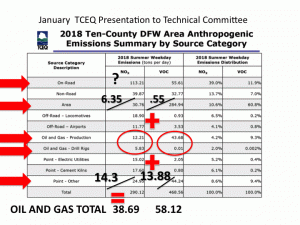
These additions raise the industry's polluter profile significantly. And that's what this next slide is doing. It's totaling all the Oil and Gas pollution and then re-ranking the categories based on these new numbers. Same totals, just different, and more honest, organization of the individual source figures. Instead of Oil and Gas emissions looking relatively small in relation to other sources like cement kilns and power plants and even locomotives, it escalates the Oil and Gas industry into one of the region's foremost industrial air polluters:
And even this much larger number is still underplaying the total amount of air pollution fracking adds to regional air quality because the state hasn't bothered to try to tease-out the "on-road" pollution that all those fracking waste and water trucks adds to the mix. State air modelers shrugged their shoulders and said they couldn't figure out how on earth to do that. Just by "Googling" the subject, Schermbeck found at least two previous studies that did that very thing – a 2005 Denton report and a 2013 Rand Corporation report that even estimated the amount of dust pollution raised by those trucks.
While those truck totals remain a mystery for now, using the TCEQ's own numbers, compressors make up at least 53% of the total NOx pollution released by the Oil and Gas industry in North Texas, and a full quarter of all VOC pollution released. According to Schermbeck, that's why they make such good targets for electrification, an air pollution control measure he was recommending as part of his larger presentation to the regional air planning committee on Monday.
This is just one example of the kind of duplicitous behavior the state of Texas is resorting to in trying to hide the true environmental and public health impact of the Oil and Gas industry. No slight of hand is too petty. Only by diligent digging by citizens is the truth coming out, ton by ton.
Schembeck's entire (unfuzzy) presentation is now online at the North Central Texas Council of Governments website as part of the June 16th agenda. It loses something without his accompanying narration but the jest of it is easily discerned for those who want to plod through it: TCEQ is doing anything but a sincere job of building a serious clean air plan for DFW. But then again, we bet you already knew that.
Rick Perry, with a Smoking Gun, in the COG Headquarters: Monday at 10 am
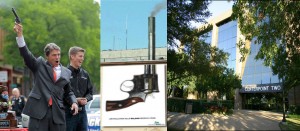 The latest chapter in a decades old mystery game of "Get a Clue" happens tomorrow morning, Monday, June 16th when representatives of the Sierra Club and Downwinders at Risk present their case against the current state anti-smog plan during the regional air planning meeting at the headquarters of the North Texas Council of Governments, 616 Six Flags Road in Arlington. Come find out who and/or what keeps the DFW area from ever meeting federal clean air standards year after year and what can be done about it. The meeting starts at 10 am. Citizen groups are expected to do their presentations in the 11 to 12 hour. Then we'll all have a debriefing lunch at the Subway's down the street hosted by State Representative Lon Burnam. Y'all come.
The latest chapter in a decades old mystery game of "Get a Clue" happens tomorrow morning, Monday, June 16th when representatives of the Sierra Club and Downwinders at Risk present their case against the current state anti-smog plan during the regional air planning meeting at the headquarters of the North Texas Council of Governments, 616 Six Flags Road in Arlington. Come find out who and/or what keeps the DFW area from ever meeting federal clean air standards year after year and what can be done about it. The meeting starts at 10 am. Citizen groups are expected to do their presentations in the 11 to 12 hour. Then we'll all have a debriefing lunch at the Subway's down the street hosted by State Representative Lon Burnam. Y'all come.

